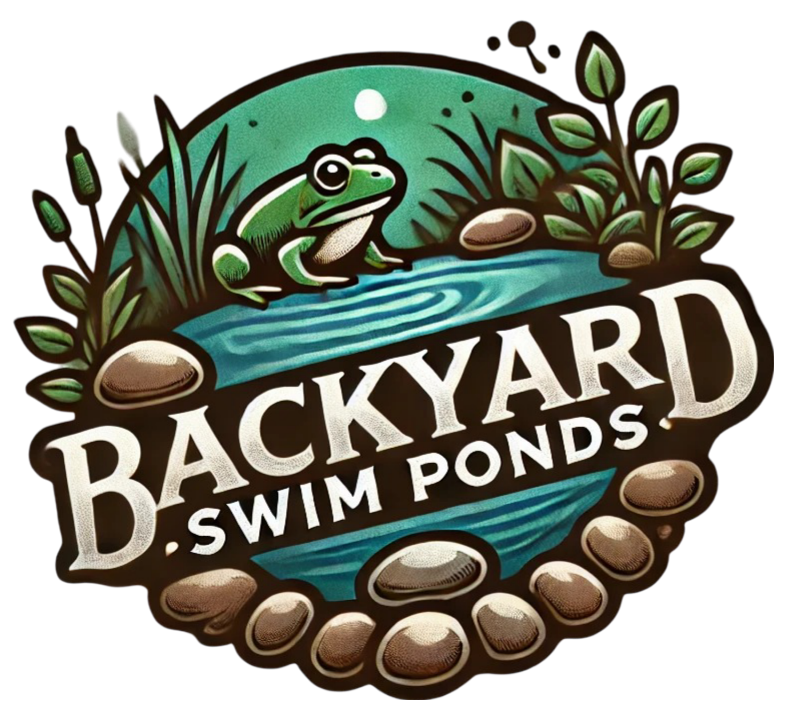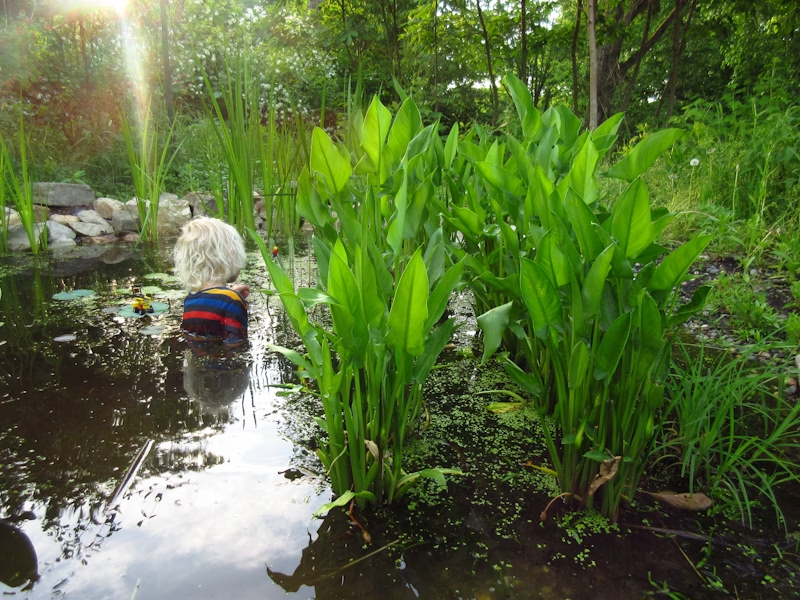Creating a natural swim pond enhances your outdoor space, blending aesthetics with ecological benefits. Native plants play a vital role in this setup, helping to purify the water and cultivate a thriving habitat for wildlife. By understanding the types of plants that work best for your specific climate and how they contribute to water quality, you can establish a vibrant swim pond that serves both your enjoyment and environmental health.
This guide details the best native plants for various climates, investigates how these plants improve water quality, and offers practical advice on setting up and maintaining your swim pond. Let’s dive into the essential aspects of creating a healthy, self-cleaning swim pond.
Discover the Advantages of Native Plants for Your Swim Pond
Incorporating native plants in your swim pond yields numerous ecological benefits. These plants are well-suited to local conditions, requiring less maintenance while providing powerful filtration capabilities.
Self-cleaning swim ponds rely on native plants to filter water naturally, keeping it clean and clear without the need for harmful chemicals. A diverse selection of native species not only enhances filtration but also creates a resilient ecosystem, supporting local wildlife and improving the pond’s overall health.
These plants work synergistically to absorb pollutants, stabilize pond banks, and prevent erosion, contributing to a more balanced ecosystem. By investing in native plants, you foster biodiversity and strengthen the ecological integrity of your pond.
Image of a healthy swim pond showcasing diverse native plants (Source: Squarespace)
Choosing the Right Native Plants for Every Climate
Selecting the appropriate native plants is crucial to ensuring effective water filtration and maintaining clear water in your swim pond. The choice of species will depend largely on your local climate.
In arid regions, such as Arizona, consider incorporating Cattails (Typha spp.), which are excellent at filtering excess nutrients and stabilizing pond edges, or Watercress (Nasturtium officinale), known for its ability to remove nitrates and phosphates effectively. Conversely, if you’re located in the Pacific Northwest, you might opt for Water Iris or Pickerelweed, which flourish in cooler, wetter conditions.
Understanding your local ecosystem and selecting plants suited to your climate will not only enhance the filtration process but also simplify your maintenance routine. It’s beneficial to pair a mix of species—submerged, floating, and marginal plants—to create an ecosystem that thrives.

Diagram showing USDA hardiness zones relevant for native plant selection (Source: Prairie Nursery)
Understanding Plant Filtration Mechanisms
Different types of native plants filter water in distinct ways, which is essential for keeping your pond clean and clear.
Submerged plants, like Hornwort, contribute to oxygenation while absorbing nutrients directly from the water, thus inhibiting algae growth. Floating plants, such as Water Lettuce, create shade, limiting sunlight that fuels excessive algae growth. Marginal plants, including Common Rush, help enhance water quality by effectively filtering out contaminants through extensive root systems.
By thoughtfully selecting a combination of these plants, you establish a living filtration system that not only helps maintain clarity but also mimics the natural processes found in healthy ecosystems.

Infographic showcasing the filtration processes of various native plants (Source: Eweb)
Setting Up Your Swim Pond: Optimal Ratios for Success
Creating a successful swim pond involves carefully balancing the swimming area with the regeneration zone for plants.
For temperate climates, a common guideline is a 50:50 ratio of swimming area to planted regeneration zone. This balance allows for optimal nutrient absorption while providing ample space for swimming. In warmer climates with higher pond usage, increasing the planted area to 60% or even 70% can help accommodate the additional contaminants introduced by swimmers.
These ratios not only promote effective ecological filtration but also support a balanced ecosystem that benefits both you and local wildlife.
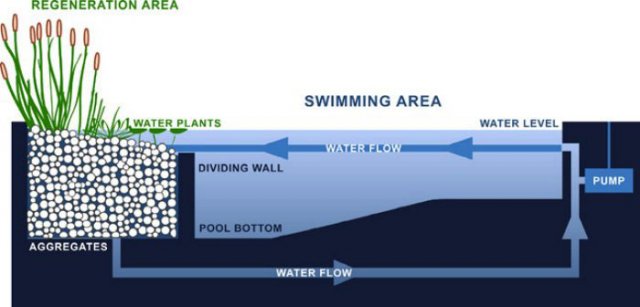
Diagram illustrating the optimal ratio of swimming area to regeneration zone in a temperate climate swim pond (Source: Ecohome)
Mastering Seasonal Maintenance for Healthy Ponds
Proper maintenance of your swim pond requires attention throughout the seasons.
In spring, begin by clearing debris and trimming back any overgrown plants to encourage fresh growth. During summer, regularly monitor water quality and remove yellowing leaves to ensure vibrant health for each plant.
As fall approaches, clear away leaves before they sink and decompose, and cut back hardy plants to prepare them for winter. In colder months, consider using a de-icer to keep water accessible for oxygen exchange, particularly in areas prone to ice formation.
Regular maintenance not only preserves the beauty of your pond but significantly improves its ecological health over time.

Seasonal maintenance calendar for aquatic gardens (Source: Shopify)
Navigating Legalities and Permitting for Your Natural Swim Pond
Before starting your swim pond project, it is essential to understand the local regulations and permitting requirements.
Most regions require permits for constructing larger water features. Be sure to check local zoning laws, especially regarding distances from property lines and access barriers to the pond. Additionally, you may need to conduct environmental assessments before beginning construction.
Consulting with local health departments about safety criteria ensures that your pond meets community standards, allowing you to create a safe environment for both people and wildlife.
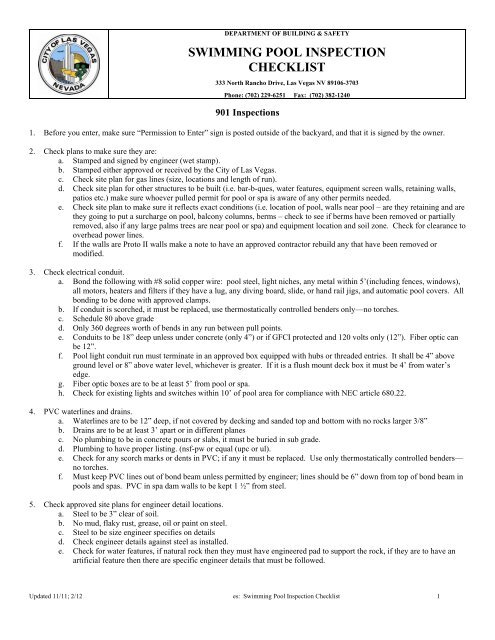
Checklist overview for swim pond inspections (Source: Yumpu)
Comparing Costs: Natural Swim Ponds vs. Traditional Pools
When weighing the option of a natural swim pond versus a traditional chlorinated pool, consider both initial investment and long-term costs.
The construction costs for a natural swim pond can range from $75,000 to $150,000, while traditional chlorinated pools may range from $37,000 to $60,000 for a standard 12 x 24 ft size. However, natural swim ponds typically incur significantly lower annual maintenance costs, averaging between $450 and $1,000. In contrast, traditional pools can incur costs up to $1,050 annually, mostly due to chemical treatments and intensive cleaning.
Additionally, natural pools are more water-efficient, consuming significantly less compared to traditional pools, making them a more sustainable choice overall.

Graphic comparing costs associated with maintaining natural swimming pools versus traditional pools (Source: Elemental Green)
Attracting Wildlife: The Hidden Benefits of Your Native Plant Pond
Using native plants in your swim pond not only beautifies your space but also attracts a variety of wildlife.
A healthy aquatic ecosystem offers habitats and food sources for local species, from fish to birds. By selecting a broad range of native flora, you can invite pollinators and beneficial insects, creating a balanced ecosystem that thrives.
Investing in native plants enhances your garden’s appeal while contributing to local biodiversity—an increasingly important component of environmental health.
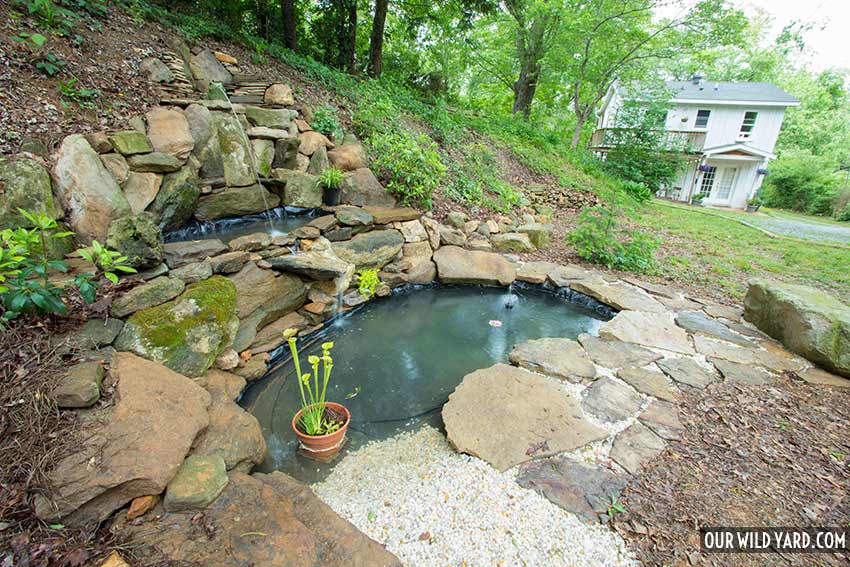
Image showcasing wildlife around a pond with native plants (Source: Our Wild Yard)
Conclusion
Incorporating native plants into your self-cleaning swim pond is a fulfilling and rewarding endeavor. By selecting the right species for your climate, mastering seasonal maintenance, and navigating local regulations, you can create a healthy, vibrant pond that benefits both you and the environment.
These plants not only contribute to clearer water quality but also promote a rich habitat for wildlife. With thoughtful planning and informed choices, your swim pond can become a thriving oasis that enhances both your outdoor space and the surrounding ecosystem for years to come.
